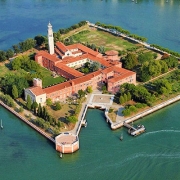Marine Monsters of the Middle Ages
An extremely curious and fascinating branch of palaeography, the science that deals with the transcription of ancient documents, is dedicated to the transcription and translation from ancient languages, medieval Latin in particular, of a text genre called Bestiaries.
What are Bestiaries?
They are collections of texts rich in information – at times highly imaginative – about animals, their physical features, their habits and the symbolic and religious meaning attributed to them.
The palaeographer’s task is to transcribe and translate the texts accompanying the illustrations of these “beasts”, thereby making the content available. At times, the images the transcriber discovers are extraordinarily beautiful, such as those shown below.
In this article, Dr. Elena Montrasio, who has been collaborating with Galactus Translations for several years, dwells especially on the texts that describe and portray marine animals, in which she is particularly interested and, more often than not, are considered as authentic monsters.
Medieval Bestiaries are full of illustrated descriptions of these legendary creatures. See, for example, the Leviathan, the Biblical monster with the appearance of a sea-dragon that devours lost souls.
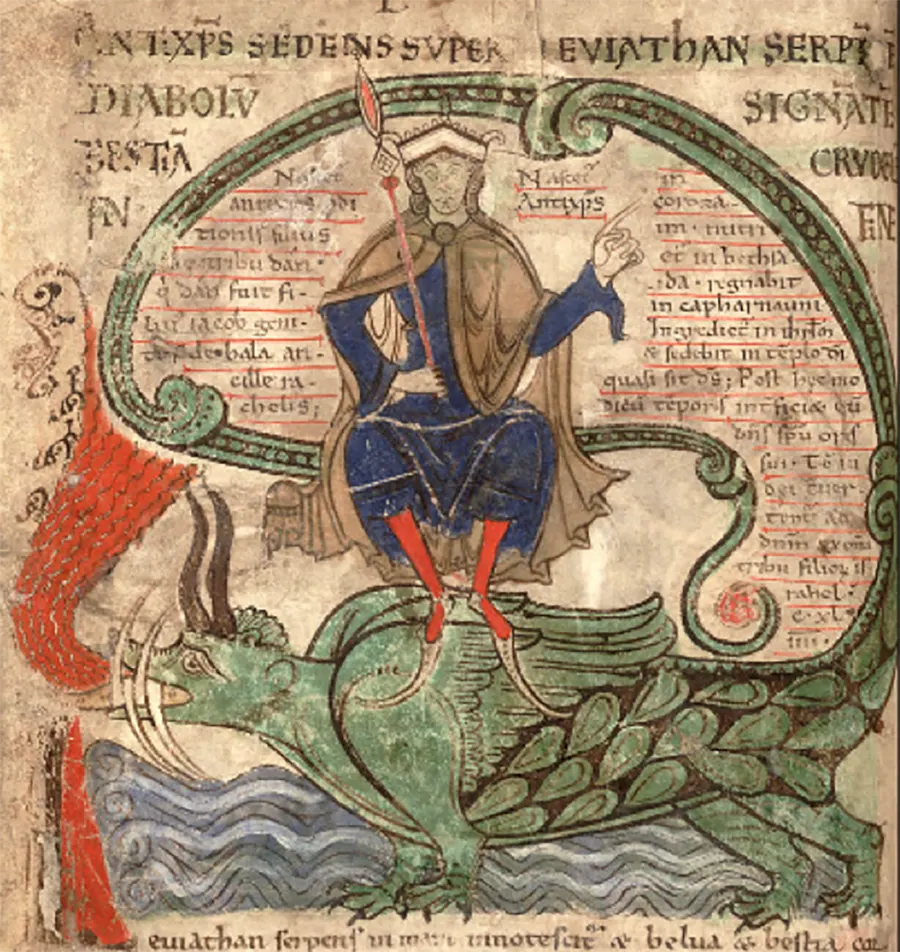
1120 miniature , from Liber Floridus, with the Antichrist seated upon the Leviathan.
We may also mention the sea-monster Pistrice, which swallowed the prophet Jonah for three days and three nights. Jonah, realizing he was the cause of the storm that had arisen because he had not listened to God’s commands, asked the sailors to throw him into the sea to calm the waters. He was then swallowed by an enormous sea-monster. After remaining in its belly for three days, he was spewed onto a deserted shore. God had pardoned him for his disobedience.

Detail of mosaic floor of the Basilica di Aquileia, 5th century A.D.
Lastly the Ketos, the monstrous cetacean of Greek mythology from which our modern term for the whale family derives. Among the most famous episodes, we mention Heracles who defeated the Ketos to free Hesione and Perseus who, after cutting off Medusa’s head, freed Andromeda from the same fate as that intended for Hesione. Following a revenge of the sea-god, Poseidon, both princesses had been bound to a cliff to be sacrificed to the monster. The illustration shows the head of the Ketos, on the bottom left, with Perseus and Andromeda.
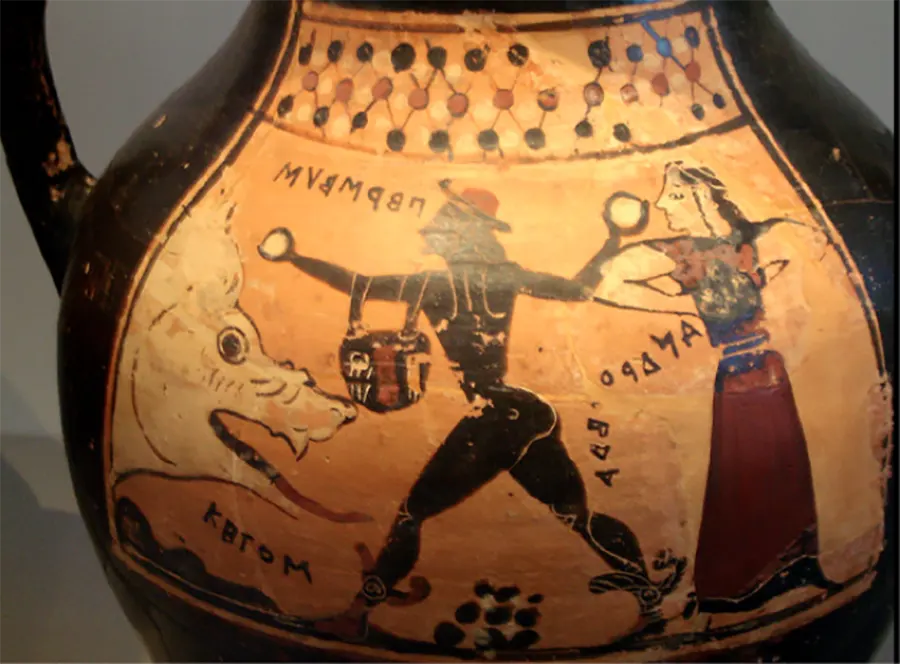
Corinthian vase displayed in the Altes Museum of Berlin.
The Whale as the Demon
Among the most famous bestiaries, we may cite a passage from Physiologus, in which the whale is described as follows: “There is a monster in the sea called the whale. It has two natures. Its first nature is this: when it is hungry, it opens its mouth, and all sorts of aromatic fragrances come from its mouth. The small fish perceive it and run in shoals into its mouth, and it swallows them. So too the Demon with heretics; by seduction and trickery, which seem to them a suave perfume, it draws in those who are young, or lack an adult reasoning, while those of adult intellect know how to resist its attractions. The other nature of the whale lies in its enormous proportions, like those of an island. Unaware, sailors fasten their ships to it, as to an island, planting their anchors and harpoons and lighting a fire upon it to cook their meal. However, as soon as it feels the heat, it dives into the abyss dragging the ships with it. If you, too, O man, bind yourself to the hopes of the Demon, it will drag you into the Gehenna of fire.
Translated from the Italian version of “Il Fisiologo”, edited by Francesco Zambon, Adelphi, Milan, 1975
As we know, this majestic animal, once likened to the Demon is, in fact, far from dangerous. Indeed, today it needs all our protection. In several cultures, this wonderful marine giant is ferociously hunted, strongly risking extinction, not for archetypal fears but rather for trade and profit.
A sea monster or an island?
The aspidochelone was an enormous sea monster, sometimes depicted as a cetacean, sometimes as a gigantic turtle, on which sailors landed, mistaking it for an island. When the monster moved, all sailors were drowned.
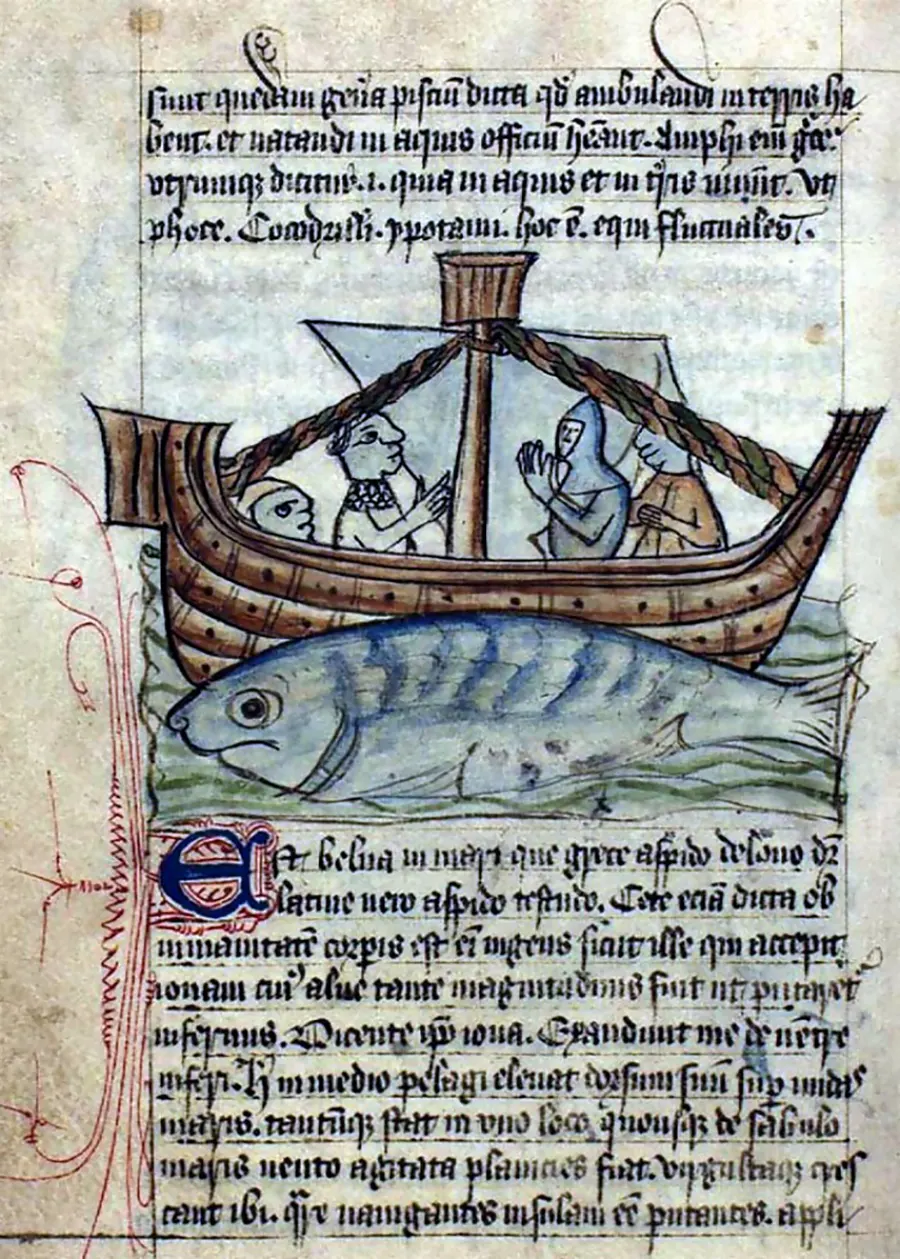
Danish Royal Library, Bestiary of Anne Walsh
Transcription: Est belua in mare que gryece aspido chelonio dicitur latine vero aspido testudo. Cete etiam dicta ob immanitatem corporis est, eius ingens sicute ille qui accepit Jonam.
Translation: There exists a beast in the sea that in Greek is called Aspido Chelonio, and Aspido Testudo in Latin. It is also called cetacean for the enormity of its body, as large as that which swallowed Jonah.
Transcription and translation by Elena Montrasio
The figurative transcription of animals as an image, is a fascinating exercise in creativity and fantasy. We thank Elena Montrasio and all the palaeographers, who collaborate with Galactus Traduzioni and work on transcriptions daily, for helping us to understand what lies hidden behind these amazing medieval images.
Cover image taken from “Danish Royal Library, Bestiary of Anne Walsh.
Translation by Elena Montrasio of the text in the cover image:
Dolphins have a specific name, or word, because they imitate men’s voices and gather together to join in a symphony. This species is swifter than the (human) one. Very often, in fact, with their leaps, they fly over the ships. Instead, when they play among the waves, they let themselves be transported by gentle leaps and seem to indicate the arrival of a storm.
Click here for other images

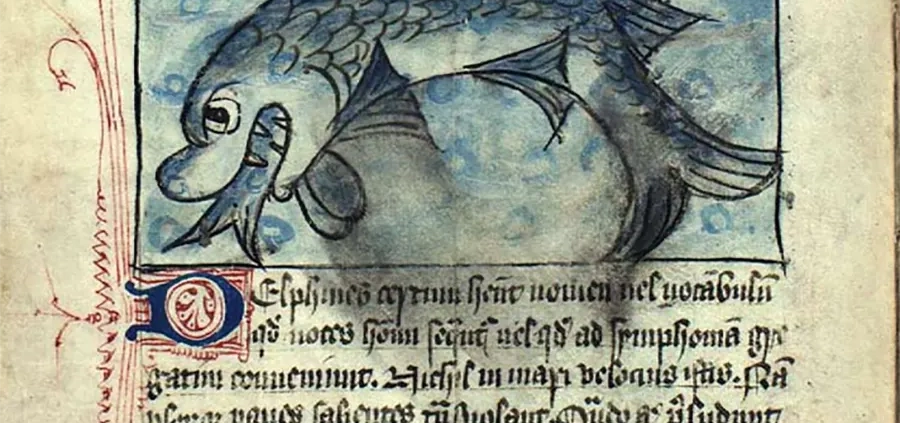


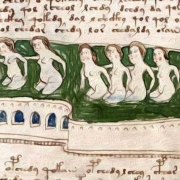


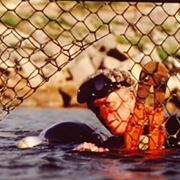
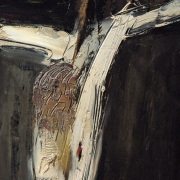 William Congdon Foundation
William Congdon Foundation